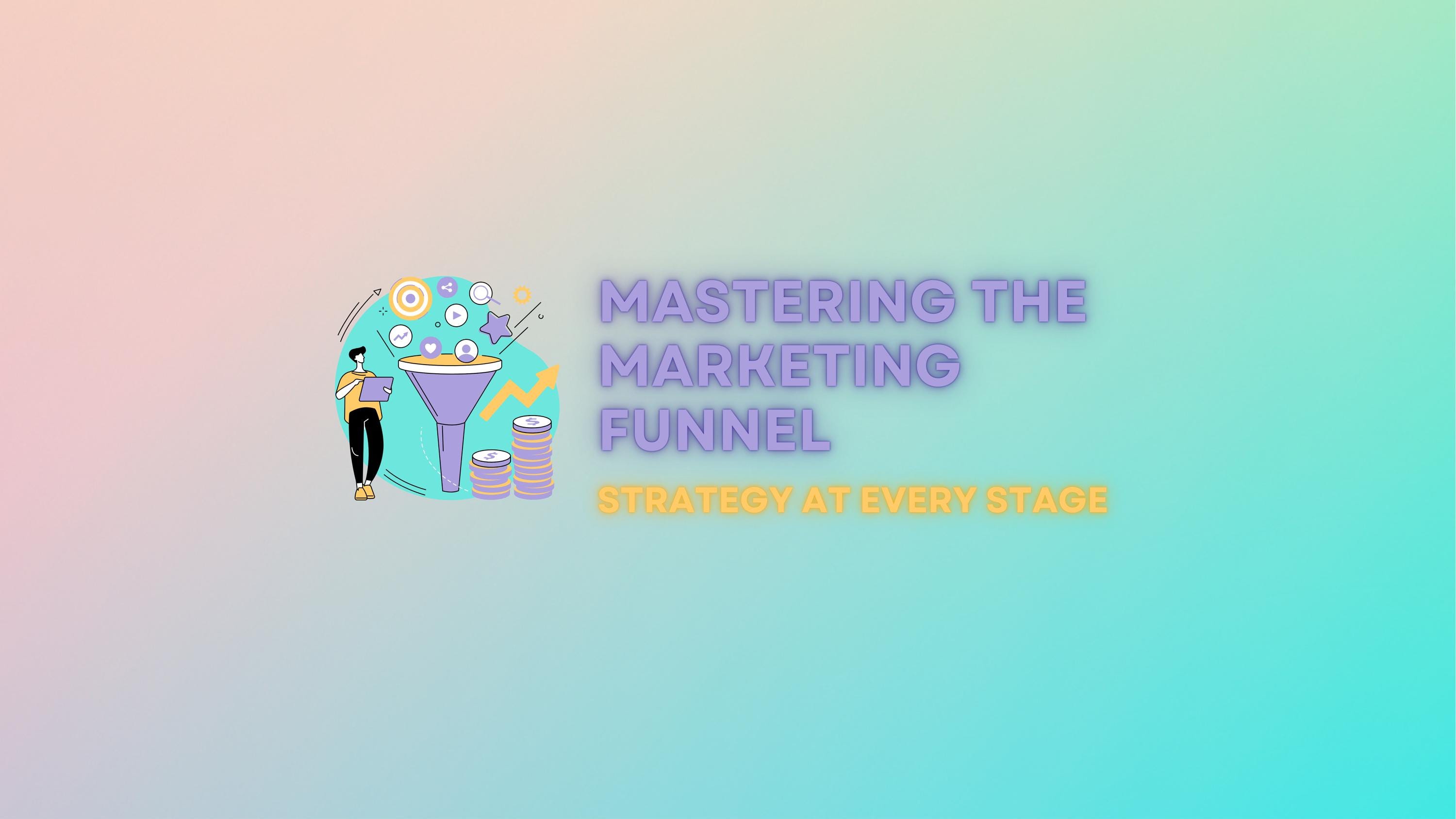Every stage of the marketing funnel has its own role to play, and its own set of needs. From capturing attention at the top to turning interest into conversions and nurturing long-term loyalty, each step represents a different mindset, expectation, and opportunity.
Success in digital marketing doesn’t come from one-size-fits-all tactics; it comes from strategic alignment, delivering the right message, to the right people, at the right stage. Tailored strategies = better results. By designing your campaigns around the funnel, you ensure your efforts are targeted, relevant, and measurable. It’s not just about what you say, it’s about when and how you say it.
And don’t forget: tracking the right KPIs at each stage is key. Metrics like impressions, conversions, and retention rates give you the clarity to see what’s working and where to optimize. Ready to rethink your marketing with a funnel-first mindset?
Awareness Stage: Making the First Impression CountAt the top of the funnel, your goal is simple yet crucial: get noticed. This is where potential customers first come into contact with your brand, often without an immediate intent to purchase. Your mission at this stage is to capture attention, spark curiosity, and begin building a relationship. To do this effectively, you need to show up consistently across the right channels—think SEO-optimized content, paid ads, social media engagement, influencer collaborations, and PR placements. The focus isn’t on selling, but on creating value-driven content that resonates with your audience’s interests and invites them into your world. This stage is all about visibility and relevance. You want to make a strong first impression that sets the tone for the rest of the customer journey. Key performance indicators (KPIs) like impressions, reach, website traffic, and engagement rates will help you understand whether your awareness efforts are working. If your content is cutting through the noise and driving attention, you’re building the foundation for everything that comes next.
Consideration Stage: Educate and EngageOnce your audience is aware of your brand, the next step is to earn their interest and trust. In the consideration stage, potential customers are actively researching their options, they’re comparing solutions, reading reviews, and evaluating who can best meet their needs. Your objective here is to position your brand as a valuable and trustworthy choice. This is where educational, in-depth content becomes your greatest asset. Blog posts, case studies, webinars, downloadable guides, email nurturing sequences, and comparison pages help you explain your value proposition clearly and credibly. It’s not just about visibility anymore—it’s about relevance and resonance. You need to demonstrate that you understand your audience’s problems and can offer real solutions. To measure how well you’re engaging prospects at this stage, track KPIs like time on page, email open and click-through rates, content downloads, and lead conversions. The more your content informs and connects, the more likely your audience is to move forward in the funnel with you.
Conversion Stage: Turning Interest into ActionAt the conversion stage, your audience is no longer just interested—they’re on the verge of making a decision. Your objective here is clear: turn intent into action. Whether it’s a purchase, a sign-up, or a booking, this is where you guide your prospect to take the final step. The strategies at this stage need to reduce friction and reinforce confidence. High-converting landing pages, persuasive calls-to-action (CTAs), limited-time offers, social proof like testimonials and reviews, and remarketing campaigns all play a key role. This is also the time to highlight what makes you the right choice—price, benefits, features, guarantees. Every element should be focused on building trust and removing hesitation. To evaluate performance, keep an eye on KPIs such as conversion rate, cost per acquisition (CPA), sales volume, and abandoned cart rate (if applicable). If your funnel is doing its job, this is where the interest you’ve nurtured turns into measurable results.
Retention Stage: Build Loyalty and Drive Repeat BusinessAcquiring a customer is only the beginning—the real growth happens when you keep them coming back. The retention stage focuses on building long-term relationships that turn one-time buyers into loyal advocates. Your objective here is to deliver consistent value, exceed expectations, and stay top of mind. Strategies like personalized email marketing, loyalty programs, customer success outreach, exclusive offers, and community-building initiatives are essential in maintaining engagement post-purchase. This stage is also an opportunity to gather feedback and improve the customer experience continuously. Happy customers not only return, they recommend. To track success, monitor KPIs such as customer retention rate, repeat purchase rate, customer lifetime value (CLV), and churn rate. A well-executed retention strategy doesn’t just protect revenue, it fuels sustainable growth by transforming satisfied customers into your most powerful marketing asset.
Funnel Thinking for Sustainable GrowthThe marketing funnel isn’t just a framework, it’s a lens that helps you build smarter strategies and sustainable growth. Each stage is an opportunity to guide, educate, and connect with your audience in meaningful ways. But to truly unlock the power of the funnel, you need to go beyond awareness campaigns and think holistically. From first click to repeat purchase, every step must be intentional and performance-driven. Optimizing each stage with tailored tactics and data-backed insights ensures you’re not just attracting leads—but nurturing loyal, long-term customers. So ask yourself: are you designing and implementing your strategy funnel-based while optimizing each stage? Because that’s where real, lasting impact begins.

